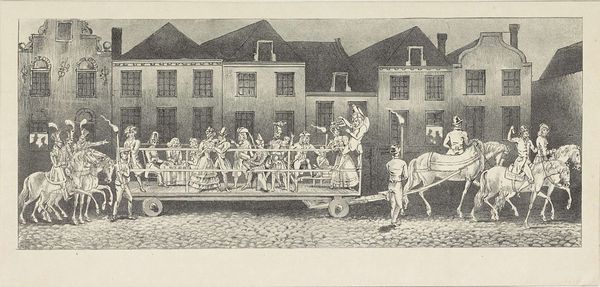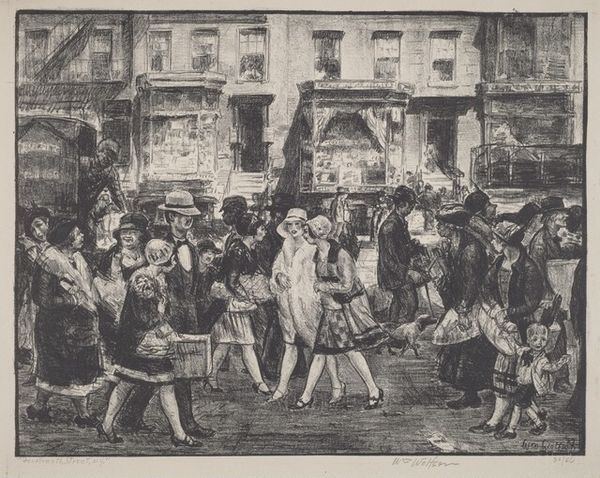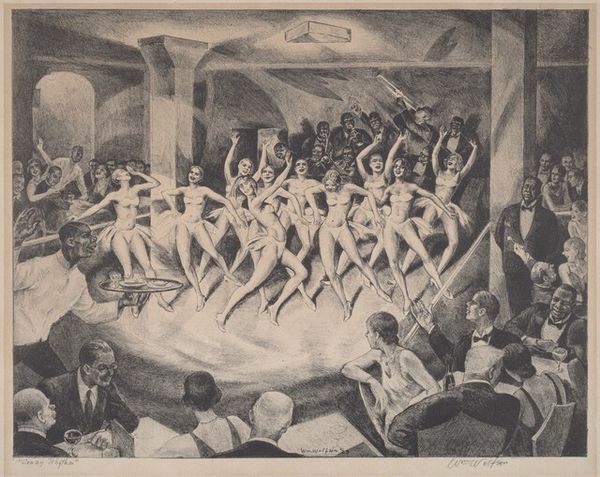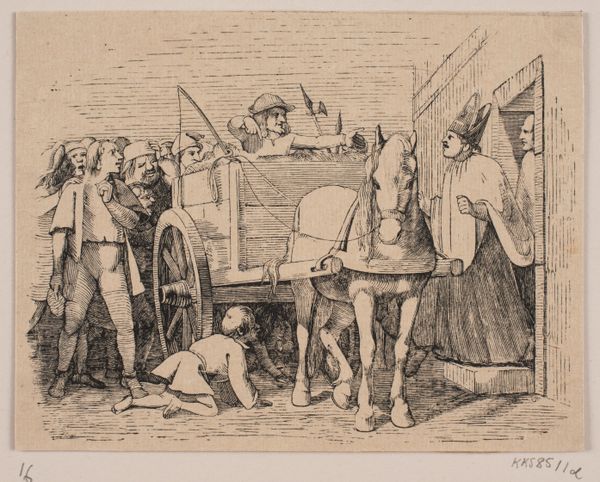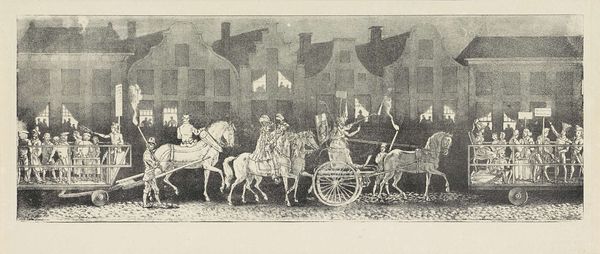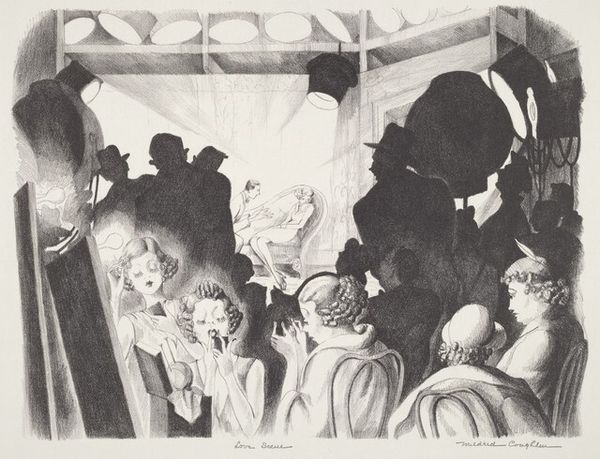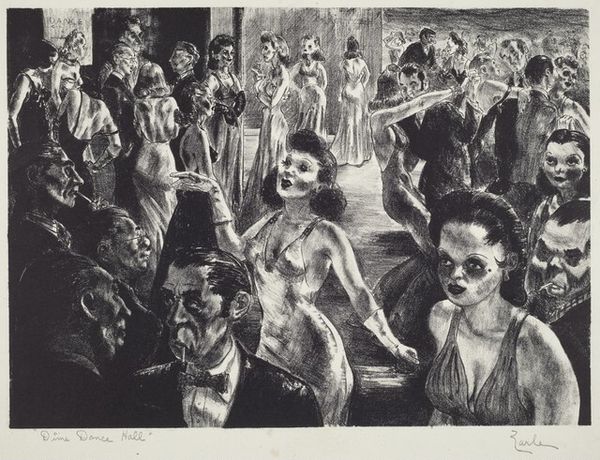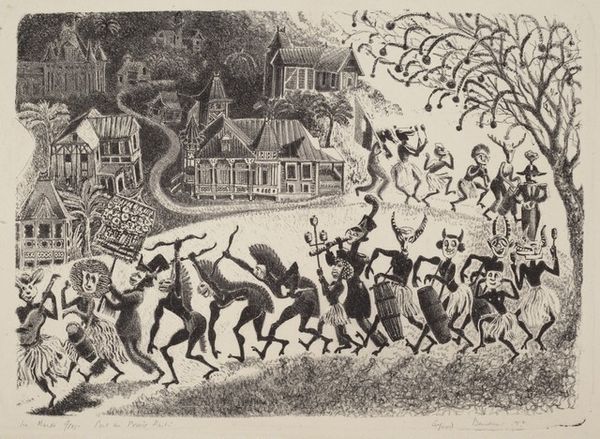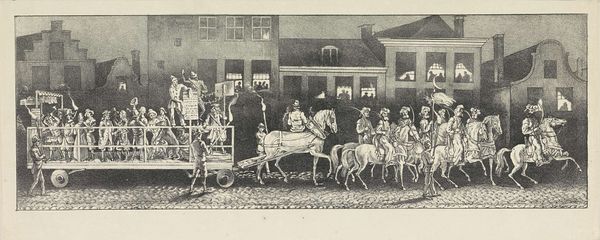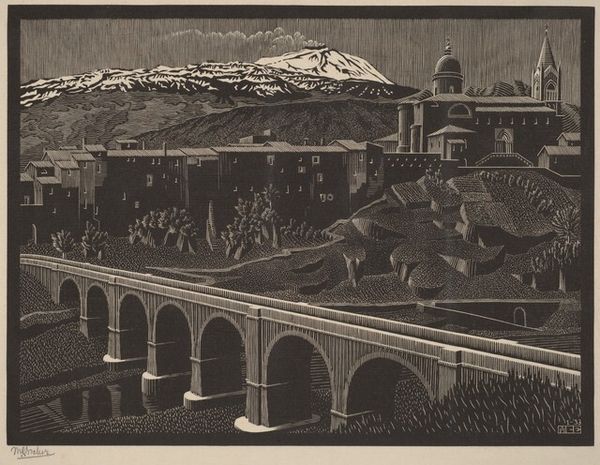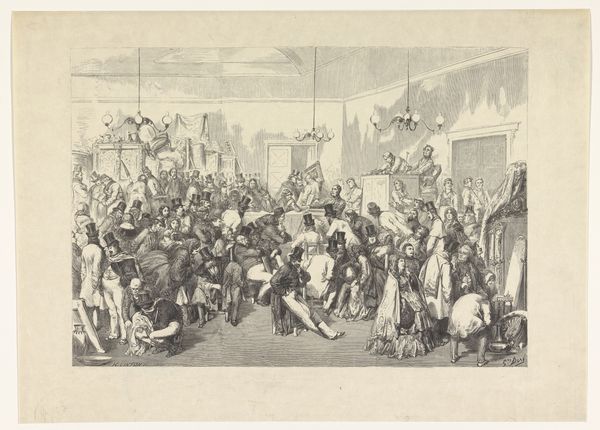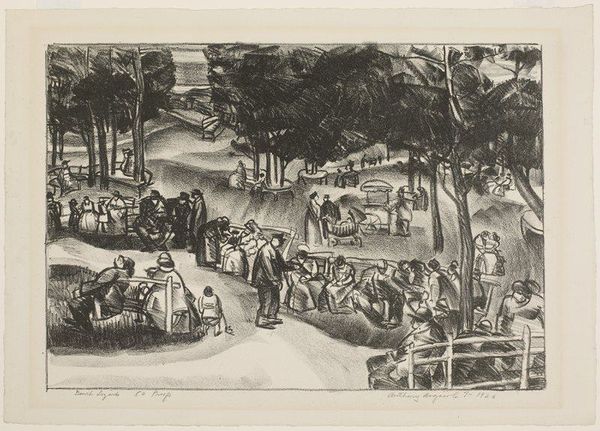
print, etching, engraving
# print
#
etching
#
romanticism
#
cityscape
#
genre-painting
#
engraving
Dimensions: height 198 mm, width 378 mm
Copyright: Rijks Museum: Open Domain
Editor: So, here we have "Procession in Masquerade, plate 7," an 1829 etching and engraving by Johannes Paulus Houtman, at the Rijksmuseum. The figures in costume and on horseback—it all feels very theatrical, almost like a play being paraded through the streets. What stories do you see unfolding here? Curator: The "stories" are exactly what engage me. Note the careful inclusion of torchlight. What does that artificial light source mean to you in an allegorical sense? The romantic period was interested in what hides in the darkness, metaphorically. Also, it hints that the procession happens in the liminal space between day and night, or clarity and confusion. Editor: That's fascinating! The torchlight adds another layer. It makes me wonder if this masquerade is more than just a celebration, maybe even a critique of society? Curator: Precisely! The figures on the float hold signs – can you make out what they say? Their posture seems performative, amplified. Consider that masquerades often served as vehicles for social commentary, permitting subversive voices a temporary platform. The clothing – which is not only antiquated – gives authority but also hints at an idealised cultural memory. Editor: That makes so much sense! The costumes aren’t just for show; they’re signifiers of power and historical narratives being acted out. I didn't pick up on it initially, but the figures in the windows seem to represent the audience. Are they also characters within the overall message, and does this reinforce a collective social narrative? Curator: Yes, consider their role: observers, judges, potential participants? They complete the circuit, adding voyeuristic dynamism to the public display. What happens outside has consequences inside. The people at home are not alienated. How might we describe the intended social outcome? Editor: I think I am getting closer to grasping the emotional intention in this piece: It shows that art, performance, and everyday social observation become indistinguishable in defining Romanticism's social critiques. Curator: Exactly! It seems we've unlocked some of its symbolic secrets together.
Comments
No comments
Be the first to comment and join the conversation on the ultimate creative platform.
